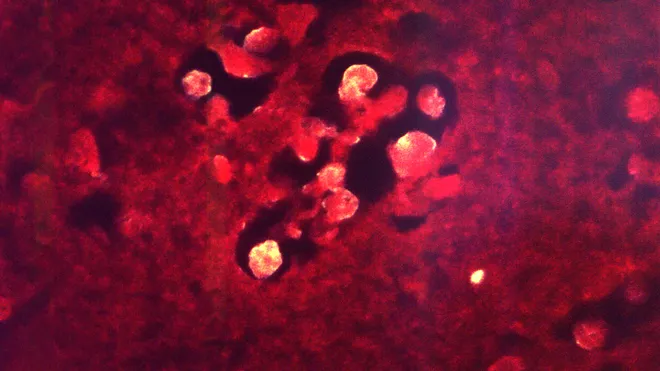In a tragic turn of events, health officials in South Carolina have confirmed the death of a person due to a brain-eating amoeba infection. The rare but deadly organism, known scientifically as Naegleria fowleri, entered the person’s body through the nose, likely during swimming in a freshwater source.
This heartbreaking case has raised alarms across the state, with people seeking to understand how such infections occur, who is at risk, and what precautions can be taken. In this article, we break down everything you need to know about the brain-eating amoeba in South Carolina.
What Is the Brain-Eating Amoeba?
The term “brain-eating amoeba” refers to a single-celled organism called Naegleria fowleri. Despite its terrifying nickname, it’s not actually “eating” the brain. Instead, it causes a severe brain infection called Primary Amoebic Meningoencephalitis (PAM).
This rare infection destroys brain tissue rapidly and is almost always fatal.
How It Infects Humans
- The amoeba lives in warm freshwater environments, such as:
- Lakes
- Rivers
- Hot springs
- Poorly maintained swimming pools
- Infection happens when contaminated water enters the body through the nose—often while swimming or diving.
- It does not spread through drinking water or from person to person.
Once it enters the nasal cavity, the amoeba travels along the olfactory nerve to the brain, where it causes inflammation and destruction of brain tissue.
Recent Case in South Carolina
What Officials Have Revealed
The South Carolina Department of Health and Environmental Control (DHEC) confirmed that the individual was exposed to the amoeba during recreational water activity. While the exact location has not been disclosed to respect the family’s privacy, officials stated it occurred in freshwater within the state.
Details Known So Far:
- Exposure occurred in early July.
- Symptoms appeared within 5–7 days of water exposure.
- The individual was hospitalized but sadly did not survive.
This marks one of the rare but deadly cases of Naegleria fowleri infection in the state.
Why South Carolina?
While South Carolina isn’t known for frequent amoeba cases, warm weather and rising freshwater temperatures in the summer make it a suitable environment for the organism.
Climate and Amoeba Growth
- The amoeba thrives in water temperatures above 80°F (27°C).
- Prolonged hot weather can increase its presence.
- Shallow, still bodies of water are the most common sources.
As global temperatures rise and people seek to cool off in lakes and rivers, the risk of exposure may increase—especially in the southeastern U.S., where such cases have been seen more frequently in recent years.
How Common Is This Infection?
Despite how frightening it sounds, infections from Naegleria fowleri are extremely rare.
By the Numbers:
- From 1962 to 2022, there were 157 confirmed cases in the U.S.
- Infections usually occur in southern states like Texas, Florida, and Louisiana.
- According to the CDC, only 4 people have survived out of those 157 cases.
In South Carolina, this is one of only a few confirmed cases over decades.
Symptoms of Brain-Eating Amoeba Infection

Early symptoms are often mistaken for common illnesses like the flu or meningitis. Recognizing symptoms early is crucial, though survival remains rare.
Stage 1: Early Symptoms (1-9 days after exposure):
- Severe headache
- Fever
- Nausea or vomiting
- Stiff neck
Stage 2: Advanced Symptoms
- Confusion
- Seizures
- Hallucinations
- Coma
Once symptoms appear, the disease progresses very rapidly—often leading to death within 5 days.
Is There a Cure?
Unfortunately, there is no guaranteed cure. Treatment is extremely difficult due to the rapid damage caused by the amoeba.
Possible Treatments:
- Anti-parasitic drugs like miltefosine
- Steroids to reduce brain swelling
- Induced hypothermia (lowering body temperature)
However, most treatments are experimental and require immediate medical attention. Survival is possible, but only with early detection and aggressive care.
How to Stay Safe in Freshwater
Understanding how the brain-eating amoeba enters the body can help people take simple precautions to reduce their risk.
Do’s and Don’ts for Water Safety:
✅ Do:
- Use nose clips while swimming in warm freshwater.
- Avoid stirring up sediment in shallow, warm freshwater.
- Keep your head above water in warm lakes or rivers.
❌ Don’t:
- Jump or dive into warm freshwater lakes or rivers.
- Let water enter your nose while bathing in untreated water.
- Use untreated tap water for nasal rinsing (like with neti pots).
Even though the risk is low, these small habits can save lives.
Are Public Water Systems Safe?
Yes. Treated tap water and public pools are generally safe, especially when properly chlorinated. The problem usually lies with stagnant or warm natural water bodies, especially in summer.
However, never use untreated tap water for:
- Neti pots or nasal rinses
- Wound cleaning
- Brushing teeth (in areas with boil water advisories)
Always boil tap water for at least one minute (or use distilled water) for nasal or sinus rinses.
How the Community Is Reacting
Following this tragic event, South Carolina residents have expressed grief and concern. Local authorities have pledged to increase public awareness about the dangers of Naegleria fowleri.
Many are calling for:
- Better signage at lakes and rivers during summer
- Public health campaigns
- Access to emergency treatments like miltefosine in local hospitals
Some parents are now reconsidering letting their children swim in lakes and rivers during peak heat.
What the CDC and DHEC Are Advising
Both the Centers for Disease Control and Prevention (CDC) and the South Carolina Department of Health have issued reminders about the rare nature of the infection, but also urge the public to stay cautious.
Their main advice:
- The infection is rare but almost always fatal.
- Prevent water from entering the nose during water activities.
- Seek immediate medical help if symptoms occur after swimming.
Public health departments across the southern U.S. are increasing efforts to monitor water temperatures and educate the public on water safety.
Final Thoughts: Stay Aware, Not Afraid
The death caused by the brain-eating amoeba in South Carolina is tragic and understandably frightening. But it’s also important to remember that these infections are extremely rare. Millions of people swim in lakes and rivers every year without incident.
With a few easy precautions and more awareness, the risk can be reduced even further.
Let this story serve as both a warning and a call to action—for better education, improved safety measures, and faster emergency responses.
Read Next – Medicaid Funding Cuts: House Bill Slashes $698B in Support






